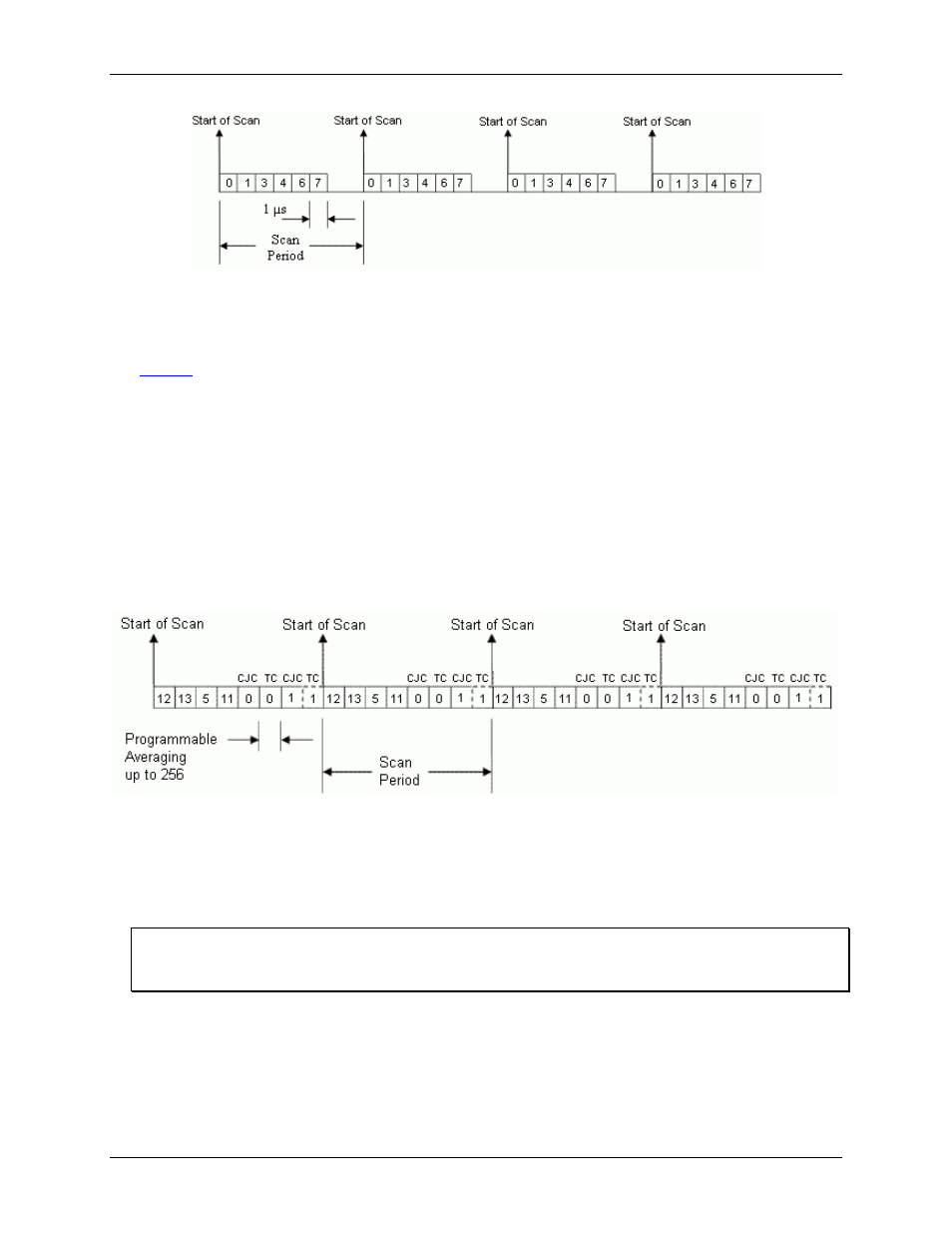Measurement Computing USB-2527 User Manual
Page 26

USB-2527 User's Guide
Functional Details
26
Figure 8. Analog channel scan of voltage inputs example
Example: Analog channel scanning of voltage and temperature inputs
shows a programmed pre-acquisition scan made up of six analog channels (Ch0, Ch1, Ch5, Ch11,
Ch12, Ch13). Each of these analog channels can have a different gain. You can program channels 0 and 1 to
directly measure TCs.
In this mode, oversampling is programmable up to 16384 oversamples per channel in the scan group. When
oversampling is applied, it is applied to all analog channels in the scan group, including temperature and voltage
channels. Digital channels are not oversampled.
If you want 256 oversamples, then each analog channel in the scan group takes 256 µs, and the returned 16-bit
value represents an average of 256 consecutive 1 µs samples of that channel. The acquisition is triggered and
16-bit values—each representing an average of 256—stream to the PC via the USB cable. Since two of the
channels in the scan group are temperature channels, you need the acquisition engine to read a cold-junction-
compensation (CJC) temperature every scan.
Figure 9. Analog channel scanning of voltage and temperature inputs example
Since the targeted number of oversamples is 256 in this example, each analog channel in the scan group
requires 256 microseconds to return one 16-bit value. The oversampling is also done for CJC temperature
measurement channels, making the minimum scan period for this example 7 X 256 µs, or 1792 µs. The
maximum scan frequency is the inverse of this number, 558 Hz.
For accurate measurements, you must associate TC and CJC channels properly
The TC channels must immediately follow their associated CJC channels in the channel array. For accurate TC
readings, associate CJC0 with TC0, CJC1 with TC1 and TC2, and CJC2 with TC3.
Example: Analog and digital scanning, once per scan mode
The scan is programmed pre-acquisition and is made up of six analog channels (Ch0, Ch2, Ch5, Ch11, Ch13,
Ch15) and four digital channels (16-bits of digital IO, three counter inputs.) Each of the analog channels can
have a different gain.